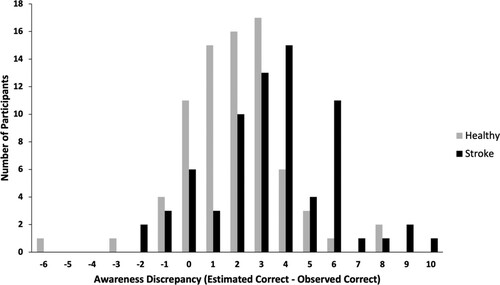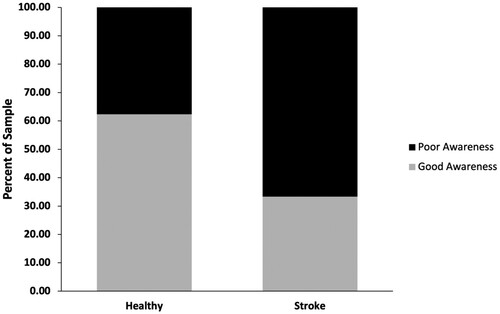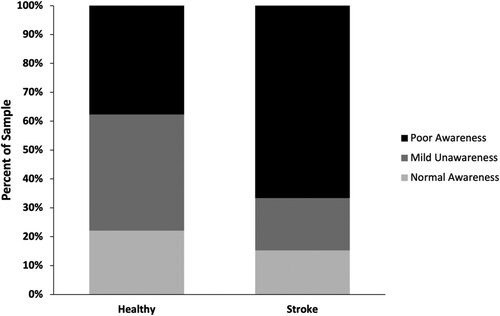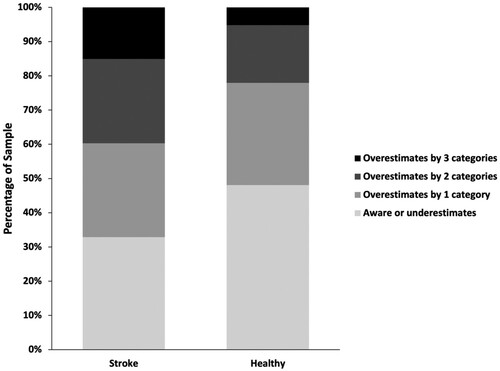Figures & data
Table 1. Post-Task Self Rating Questions (a) and Awareness Categorization Scheme (b).
Table 2. Frequency (N[%]) of responses by group (Stroke, Healthy Control) on the Post-Task Interview and Self-Rating
Figure 1. Frequency distribution of discrepancy between estimated accuracy (number correct out of 10) and observed accuracy on the 10-item Weekly Calendar Planning Activity. Positive values of Awareness Discrepancy indicate overestimation and negative values indicate underestimation.

Figure 2. Percent of sample classified as having poor awareness (estimated accuracy – observed accuracy > 2) vs. good awareness, by group.

Figure 3. Percent of sample classified as having poor awareness (estimated accuracy – observed accuracy > 2), mild unawareness (estimated accuracy – observed accuracy = 1-2) vs. good awareness, by group.

Figure 4. Unawareness by group as calculated by Awareness Level, the discrepancy between participants’ self-rating category (1-4) and accuracy category (also 1-4).

